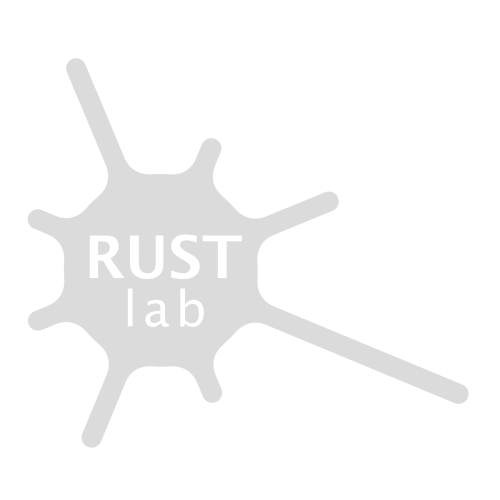Comment by Lynn Werner
In this term’s second lecture, “More Than Human-Centered Design in Urban Farming”, Anton Poikolainen Rosén introduced us to his ethnographic research and design work in urban farming communities. Anton is a PhD student in sustainable Human-Computer Interaction at Södertörn University, Stockholm and Umeå University. His work focuses on including non-human actors through a more-than-human design approach. All of the fascinating design projects discussed in this comment are included in Anton’s portfolio, which you can find on his website.
The more-than-human approach to design acknowledges the need to shift from the human-centered perspective to an understanding of mutual interdependence that also takes into account non-human actors like bees, plants and soil, smartphones and measuring tools. While all entities are valued equally in this approach, there is still a focus on humans and what is closest to them. It also encourages a sense of care towards the non-human actors we are interconnected with. With this lecture we had the pleasure of exploring how these ideas might be translated into concrete designs.
Anton’s work within the urban farming communities led him to experiment with different more-than-human design ideas based on the needs expressed by members of the community. One of the projects he shared with us included three designs each focused on a different approach to urban farming. These designs illustrate very different ways of including non-human actors. While the Green Thumbs design makes it possible to access data about the soil from a distance and provides AI-generated suggestions for improvement, the Dirty Nails design encourages the farmers to get into direct contact with the soil to retrieve the data via sensor-rings. The third design BeeNoculars enhances the human vision by making UV-patterns visible and thereby including the perspective of bees as more-than-human actors.
Many of the design projects we learned about emphasize the importance of not only collecting, but also sensing data. This approach, which avoids merely experiencing data through a screen, disconnected from the non-human actors it concerns, encourages the participants to be more attentive towards these actors and their needs. In his design prototypes, botAnica and preSense, Anton experimented with the use of CO²-sensors to enhance what is sensible to human actors. The participants were invited to breathe on plants while sensors measured the CO²-concentration, making the interaction between humans and plants visible.
Interestingly, Anton made the observation that the sensors also act as an obstructive layer. In his first prototype the participants directly breathed on the CO²-sensor, leading them to interact with the sensor instead of the plants. His second design therefore included hidden sensors and encouraged the participants to spend more time with the plants by including a soundscape, which changed when the plant was approached or touched.
A very intriguing point of the lecture was that sensing is not only a direct interaction between humans and biological actors like plants and soil, but is often mediated through technological devices. This interaction between human and non-human actors (both technological and organic) opens up an interesting field for discussion. In one of their papers, Anton and his colleagues write about the smartphone camera as a tool used by members of an urban community farm in Stockholm. It serves different purposes like remembering practical tasks but also experiencing the flow of time and the seasons through photography. In this paper, the smartphone camera is “framed as bridging the physical and digital world” (Poikolainen Rosén et al, 2020, p. 516). It provides a relatively simple and direct way to make use of technology in an urban farming context.
However, in our discussion of Anton’s work, we also noticed that the use of smartphones could be impractical because of dirty hands or wearing gloves while gardening. A central challenge seems to be how the sense of an obstructive layer can be minimized when incorporating useful technological devices into urban farming practices. The degree to which the smartphone is perceived as interfering with the direct experience of nature might also vary from one farmer to the other.
In our discussion following Anton’s lecture it was also brought up that urban farming is an inherently cultural practice. This becomes relevant when looking at seemingly non-human interdependencies in this area. For example, mutually profitable relations, which naturally occur between different kinds of plants, are produced by humans in the context of farming with the intention of optimizing the growth of crops. This demonstrates just how intertwined human and non-human actors are in the practice of urban farming and highlights how human design systems can be inspired by non-human design systems.
Anton’s lecture sparked a lively conversation about these interdependencies and left us with a wonderful insight into the world of more-than-human design and urban farming. It also led us to think about further approaches: What are the differences between sensing and experiencing the world and which actors have the ability to sense or experience? How can the human senses be advanced through technology and to what extent does this create an obstructive layer? What meaning does urban farming have for the community members? Are they interested in learning more about the environment they are working with? How can groups like elderly people be included into these communities and how might they profit from urban farming?
Based on his research Anton is working on a design-toolkit, which takes the complex systems of more-than-human interaction into account. Following different steps like articulating one’s worldview and characterizing relevant actors and their needs, it becomes possible to sketch out these systems and identify points for intervention. This toolkit provides a very inviting and accessible insight into the more-than-human perspective and can be useful in many contexts inside and outside of academia. It is continuously updated based on its use in workshops and education and we are very excited to see further developments!
References:
Poikolainen Rosén, A., Normark, M., Wiberg, M. (2020). Relating to the Environment Through Photography: The Smartphone Camera as a Tool in Urban Farming. 32nd Australian Conference on Human-Computer Interaction, 506-519.
